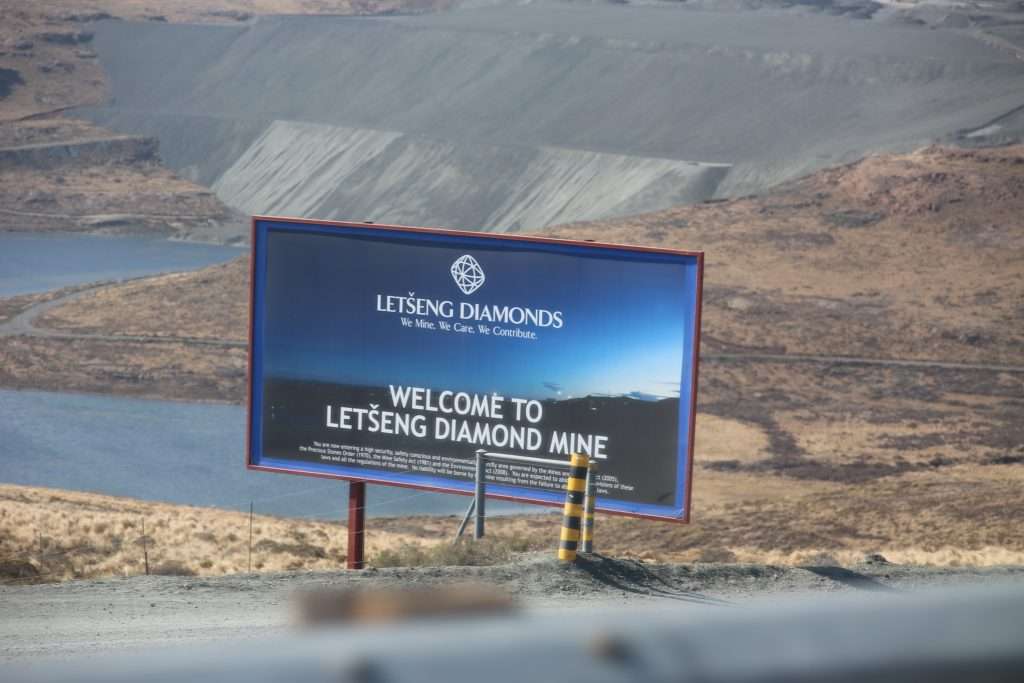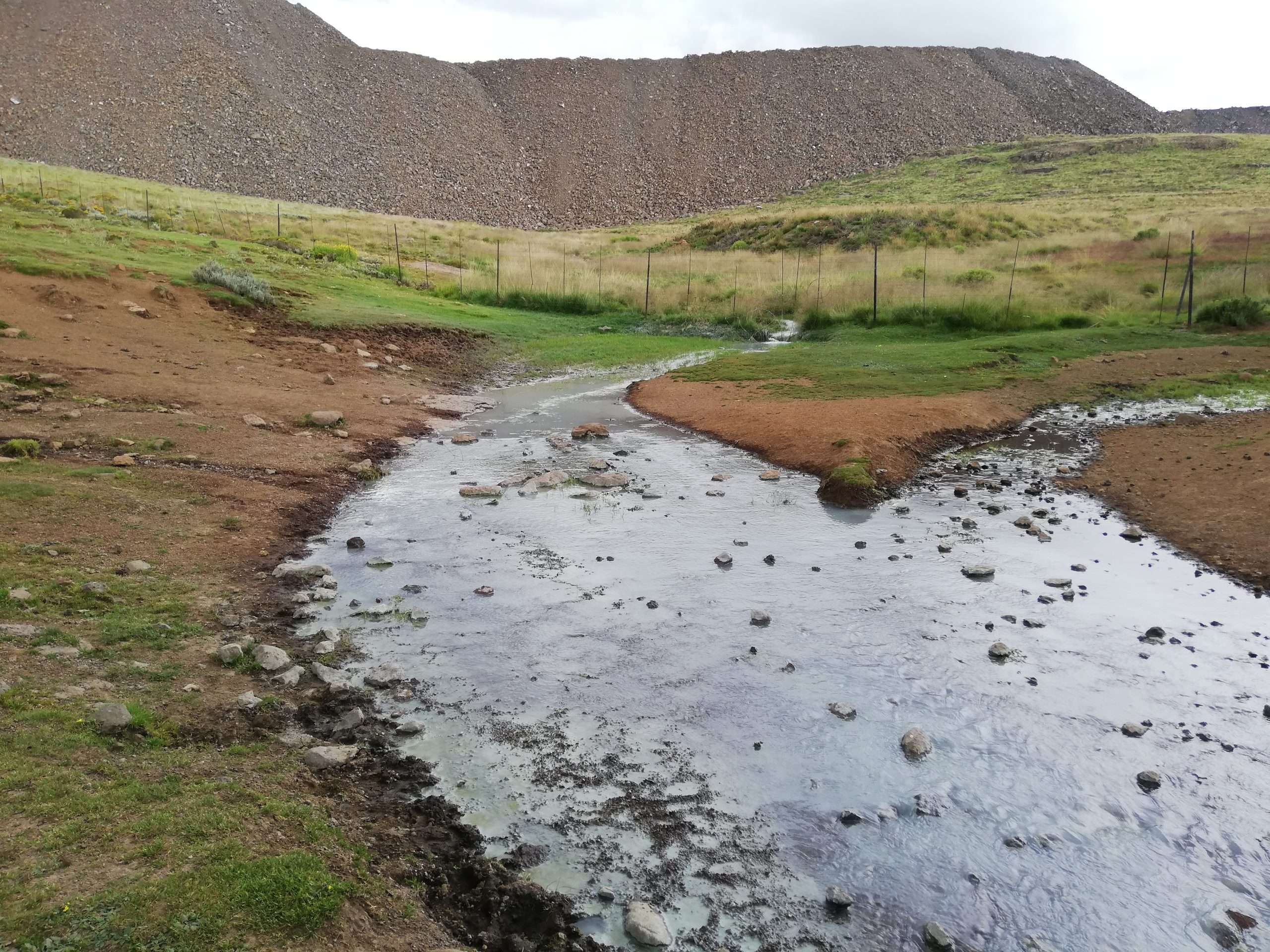Letšeng Mine Builds Water Pipelines After Investigations Reveal Pollution Risks to Villagers
Est. Read Time: 4m 52s

Letšeng Diamonds Mine, a leading mine in Lesotho, has constructed two water pipelines following extensive media investigations into its alleged water pollution. These investigations were supported by the Bertha Foundation and the Pulitzer Center.
The water infrastructure projects have been completed in two villages located downstream of the mine—Patising and Maloraneng. The construction follows a 2022 investigation, funded by the Bertha Foundation, which revealed the environmental impacts of Letšeng’s operations on local watercourses.
This investigation prompted a confidential water quality assessment by the Department of Water, focusing on the Maloraneng stream. Further investigative reporting, supported by the Pulitzer Center, revealed that infants drinking water from the Maloraneng stream—an essential resource for over 100 people—are at risk of hemoglobinemia, a potentially fatal condition that causes suffocation.
Pascalinah Kabi, Managing Editor of Uncensored News and the only journalist to expose Letšeng Diamonds Mine’s private admission that its operations were contaminating water sources, sought clarification from the mine regarding the water pipeline projects.
Tšepo Hlojeng, Corporate Social Responsibility, Investment, and Communications Specialist at the mine, provided the following responses in this Q&A::
Pascalinah Kabi: What specific role is Letšeng Diamonds Mine playing in the water construction projects in Patising and Maloraneng, and how is the company contributing to the local communities?
Tšepo Hlojeng: Both Patising and Maloraneng water construction are supported and financed by Letšeng Diamonds under its Corporate Social Responsibility and Investment (CSRI) programme. The mine engaged the contractors, developed the scope of work in consultation with the community and supervised the construction works. The Department of Rural Water Supply (DRWS) was involved in the development of the scope and monitoring of the project’s implementation.
In addition to these water projects, the mine is currently rehabilitating the access road from the A1 Mokhotlong road, to Lichecheng and Pae-la-Itlhatsoa villages. The recruitment of the casual labours that used to be done only at Phuthalichaba village has been extended to the Pae-la-Itlhatsoa community. The chief and counsellor are responsible for the recruitment.
The following projects were implemented at Pae-la-Itlhatsoa: Construction of two footbridges; Construction of the Chief Office; Construction of classrooms at Pae-la-Itlhatsoa Primary School; Construction of Maloraneng Lodge and ‘Mapoka Camp Site (and) Provision of food parcels, masks and sanitisers during Covid-19 pandemic.
Pascalinah Kabi: Could you provide detailed information on the scope and timeline of these projects in Patising and Maloraneng?
Tšepo Hlojeng: The Patising project draws water from Ha Ramosoeu village which is adjacent to Patising. The water is gravitated from Ha Ramosoeu to the water tank and transferred to the standpipes at Patising. From the same water source, the water is pumped up to Ha Ramosoeu village. Lithakong village which is close to Patising has also been supplied with water from a water source located at the top of the mountain on the way to Lichecheng village.
A borehole has been constructed at Maloraneng to supply water to the village, this is in addition to the already existing water supply system which had to be renovated and upgraded. Both projects have been completed.
Pascalinah Kabi: Given that Letšeng Diamonds Mine has previously acknowledged that its operations are polluting water sources downstream, are the water construction projects in Patising and Maloraneng being implemented to ensure these communities have access to safe, unpolluted water?
Tšepo Hlojeng: It is important to address this and say that it would be a misrepresentation to say that Letšeng has acknowledged that its operations are polluting the environment.
It is widely acknowledged and accepted that every industrial operation of the nature that the mines undertake is bound to have some level of disturbance to the surrounding natural environment be it social, economic, water, soil, air or any of the other environmental measures and hence there exist Social & Environmental Management Plans (SEMPs), Social and Environmental Impact Assessments (SEIAs) and other related measures.
The above mentioned and other CSRI projects are done to uplift and improve the standard of living for the communities. The projects are implemented at the request of the communities themselves.
There are however a number of strategies developed to manage and minimise any likely impacts on the environment. These strategies are implemented and monitored as per the approved Social and Environmental Management Plan (SEMP). The SEMP is revised every three years and is approved by the Department of Environment.
Letšeng has recently invested approximately M17 million to set up a bioremediation water treatment facility with the aim to denitrify the seepage water that escapes the mine site particularly underneath the waste rock dump. The treated water from the bioremediation processing plant (is) intended to supplement dilution in the Maloraneng stream especially during winter season when precipitation is minimal.
Pascalinah Kabi: Have any environmental or social impact assessments been conducted prior to the start of these projects? If so, could you share the findings?
Tšepo Hlojeng: Letšeng holds a number of Record of Decisions (RoDs) from the relevant authorities regarding Environmental Impact Assessment (EIAs) conducted on various mining operations. These span from 2004 to date. The most detailed ESIA was conducted in 2012 which culminated into the requirement for Letšeng to review and update the SEMP every three (3) years to ensure mining operations abide by the RoD conditions that have also accumulated over time at different stages of approvals and the SEMP is approved by DoE at each review cycle.
It is important to note that these water supply initiatives are not new projects which may require EIAs, but rather activities which are aligned with the commitments of the approved SEMP. Additionally, the requirements for such small-scale projects by nature, need the developer to obtain first the approval from the Council and Rural Water Supply. The contractor also obtained the drilling permit from the Department of Water Affairs including consultation to identify the ideal location for the borehole.
Pascalinah Kabi: How will these water projects benefit the residents of Patising and Maloraneng in the long term, and what measures are in place to ensure their sustainability?
Tšepo Hlojeng: These projects will benefit the residents with the supply of clean water even beyond the life span of the mine. Please note that the Maloraneng system was constructed in 2013 by Letšeng through CSRI, the works currently been done, is merely upgrading this system. The new development was a borehole to supplement this water supply system to ensure long term sustainability.
In the same breath, the Patising system was constructed in 2015 but was unfortunately eroded by floods in 2021. The works that have been completed there were to replace the eroded system with a more improved and sustainable water system. The projects have been handed over to the Rural Water Supply (RWS) who will now be responsible for their maintenance. RWS has formed water committees at each village which is responsible for the day-to-day management and maintenance of the water systems under their guidance and supervision.



1 Comment
Since Letšeng polluted the Patising and Maloraneng water and we all know that polluted or dirty water can cause one to get sick. Shouldn’t Letšeng pay for those sick people’s medical bills?